What Artist Were Famous for Social Media Art Works
The 12 best social media platforms for artists and designers
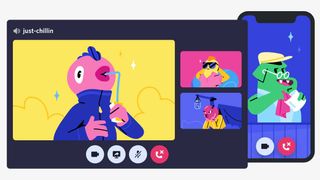
If you desire to succeed in digital art you need to master more than one social media platform. From TikTok to Twitch these are splendid places to showcase your best work and promote yourself equally a creative.
Your online presence could help you lot to secure a new job, gain freelance clients or creative collaborators, as well as build your professional reputation. Artists like Loish have mastered the art of social media employ, and yous learn from her too, read in her tips for marketing yourself on social media.
But with so many social media platforms to choose from, how exercise you know which ones to use? To notice out, we listened to the advice of a range of creative professionals including artists, photographers, designers and filmmakers. We learned what they like about each social media platform and why you might find each 1 useful for displaying elements of your portfolio (for more portfolio inspiration, see our graphic design portfolio mail service), or maybe something else.
We used their answers to list the most useful social media platforms for artists and designers correct at present. Also check out our guide to how to make social media work for you and our ultimate guide to social media for creatives.
01. Discord
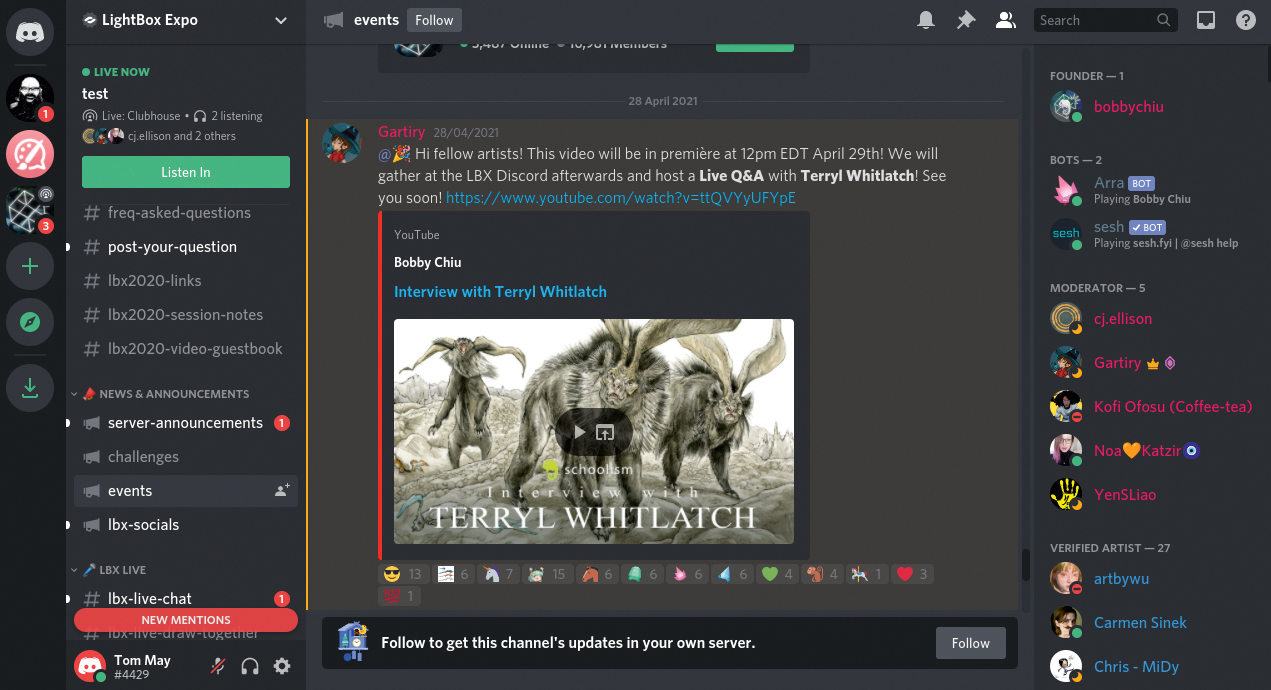
Founded in 2015, Discord may not be top of your list of obvious social media platforms for artists and creatives, but considering this web and mobile app is focused
on enabling specific communities to hang out and connect, rather than merely a sea of random followers, in the Covid era, it's actually taken off.
"I became an avid Discord user once everyone started working from dwelling house," says LA-based concept designer and illustrator Airi Pan. "Information technology offers voice, text options and streaming options, so information technology's perfect as a 'virtual hang spot' for friends or coworkers.
"I utilize information technology in voice format, to mimic working alongside them, equally we hunch over our tablets drawing. Information technology's like a virtual common room! It also acts every bit a community hub for events such as LightBox Expo, Weekend Warrior Painters, or small groups of artists who are just trying to get ameliorate."
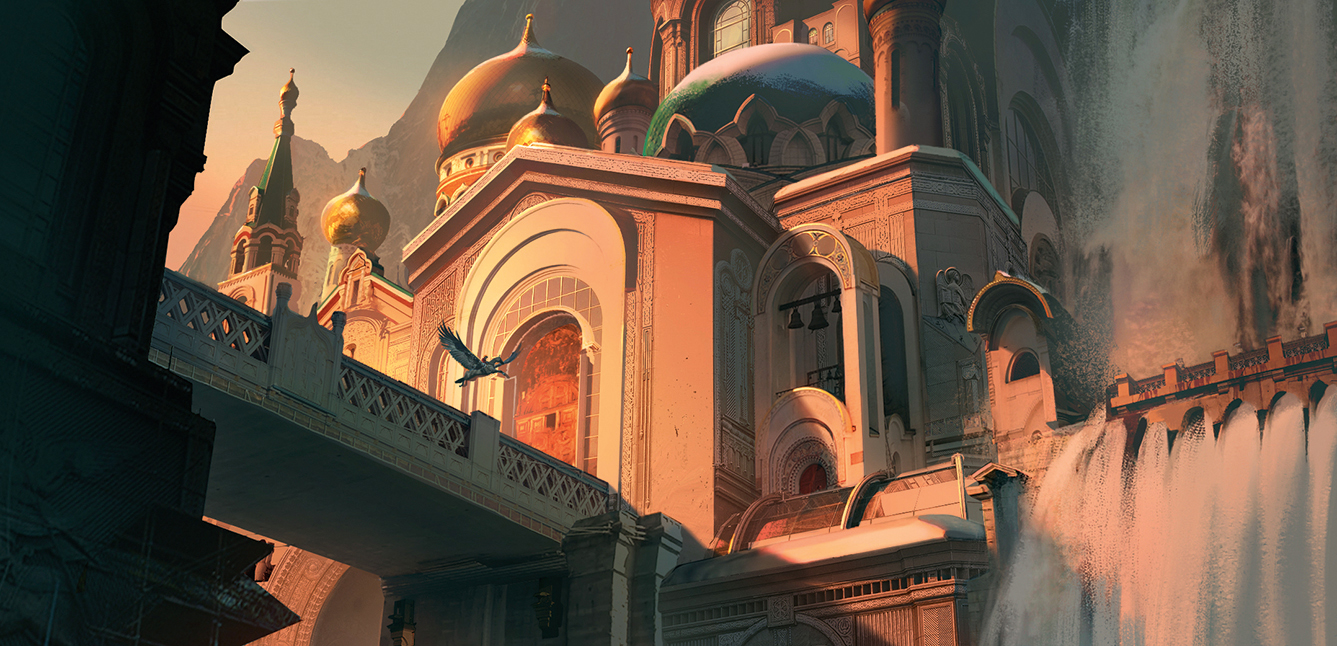
Spiridon Giannakis, a German designer and publisher of fine art books, recently launched a Discord server to chat nearly his projects, as well as mental health issues (visit Artbook News to learn more). "The environment on Discord is really positive," he enthuses. "With the help of moderators, everything tin exist kept very tidy, and conversations are extremely valuable. It's a bit like the experience of a forum, with the improver of newer tech aspects."
He hasn't had a single negative encounter on Discord so far. "Unlike most social media, which simply makes me wonder every day if I really need it. It'south all been positive," he says. "My server at present has over a thousand people: I never expected and then many. I always thought art books are very niche, only information technology'south shown me that the interest is there."
02. Twitch

If you're looking to build a wider audience for your art, and augment your appeal, then Twitch is the social media platform of choice. Launched in 2011, this live-video platform was originally developed for gamers. But artists are too using it to alive-stream their process, make new contacts and grow their personal brand.
Montreal-based fine art managing director and lead concept creative person Nicolas Vallet is amid them. "Long story short: I wanted to connect," he explains. "Living in Mainland china at the time, I was very focused on my day-to-solar day work, merely quite bad at publicising myself. Art streams are a squeamish way to split up the divergence. I get to draw and talk to people, at the same time as practising my technique."
Vallet's Twitch channel stayed modest for a while, but the pandemic meant he had more free time. "And so I added extra days, and my audience began to grow. I'd inquire questions to know people better, and let them share their ain experiences. I started to attract regular viewers, and some of them are friends now." He has this communication to anyone live-streaming on Twitch: "People like energy and passion, so share that first and foremost. And exist consistent: a regular schedule will help people to find you lot."
03. TikTok
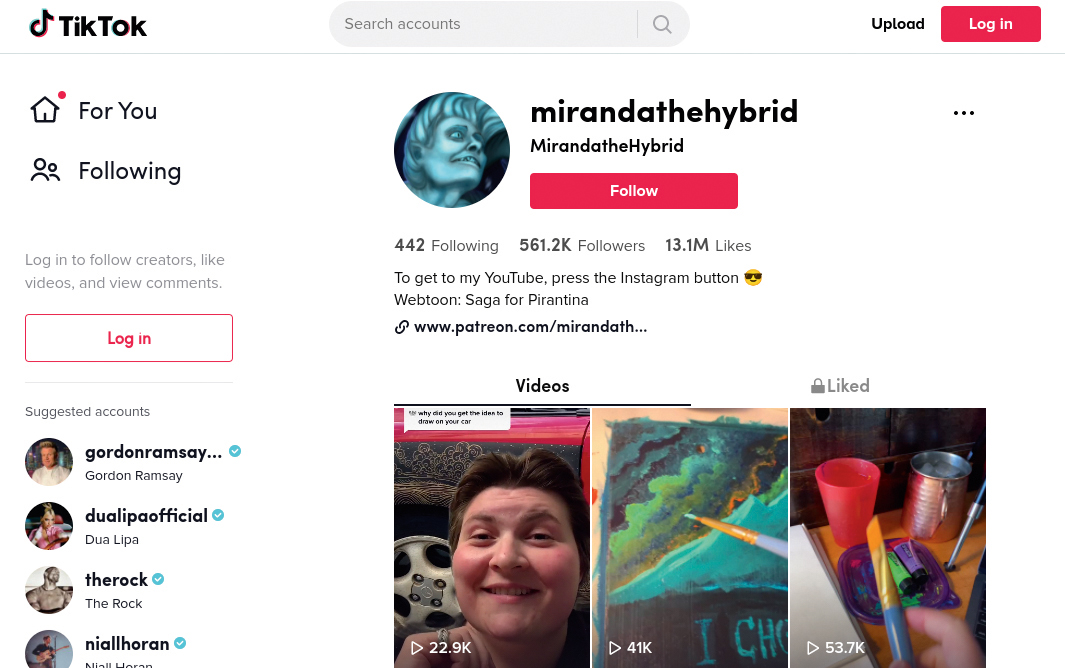
Simply every bit Twitch is mainly known for gaming, most people associate TikTok with lip syncing and daft challenges. Yet the curt-form video app, which has almost 700 million agile users, is alluring artists also.
"I was introduced to TikTok by a friend and saw the potential for loftier exposure," says Ohio-based animator and illustrator Miranda Pavelle (@mirandathehybrid on TikTok). "My first 'viral' video was only a sketch of my Miata, and information technology received 6,000 likes and 20,000 views in a 24-hour interval or two, which is more than attending than I'd ever gotten on other social channels."
Miranda now has more than than half a 1000000 followers, and likes how the brevity of TikTok videos forces you to be snappy and to the point. "I love teaching and sharing my noesis in seize with teeth-sized, low-cal-hearted form," she says. "My art videos are miniature versions of total tutorials, so if you lot run into something useful, you tin can go to my YouTube and get the full lesson."
Her advice for launching a TikTok aqueduct is unproblematic. "Be yourself," she stresses. "Trends rack in views, but they eventually dice and make fashion for something else. What never dies is people connecting to yous as a person: your quirks, your procedure, you getting bubbly over what you're passionate almost. Gen Z and millennials are pretty darned tired of being advertised to; then don't leap on the app with the
intention of starting a business or getting views, because people volition exist able to tell."
04. Clubhouse

Clubhouse was launched in 2020 and is a voice-based social platform that hosts virtual rooms for alive discussions. Information technology's an iOS and Android app that at time of writing was invite merely. If you desire to acquire most Clubhouse, see our guide, what is Clubhouse?
Being audio merely, you might not call up visual artists would exist interested in Clubhouse, but in fact there's quite a fleck going on. For instance, LightBox Expo hosts a regular give-and-take there every Tuesday at 9am PST, with big-proper name creatives such as Karla Ortiz, Brynn Metheney, Lorne Lanning and Elsa Chang taking office. If you're not on Clubhouse, you can listen in in on Discord.
Airi, who'southward called @pix_bun on Clubhouse, recently participated in a LightBox session called 'Imitation it till y'all make it, but keep it 18-carat'. "It was delightful!" she recalls. "The word was well-paced thanks to the moderators such as Bobby Chiu." Unremarkably though, she uses Clubhouse as more than of a podcast app, as something to listen to while she works.
"Yous tin can hear veteran industry professionals speak, and hear cracking tips you won't go from a scripted interview," Pan says. "Depending on the talk, information technology can feel like people conversing right next to you, which makes working from dwelling a little less lonely."
05. Dayflash
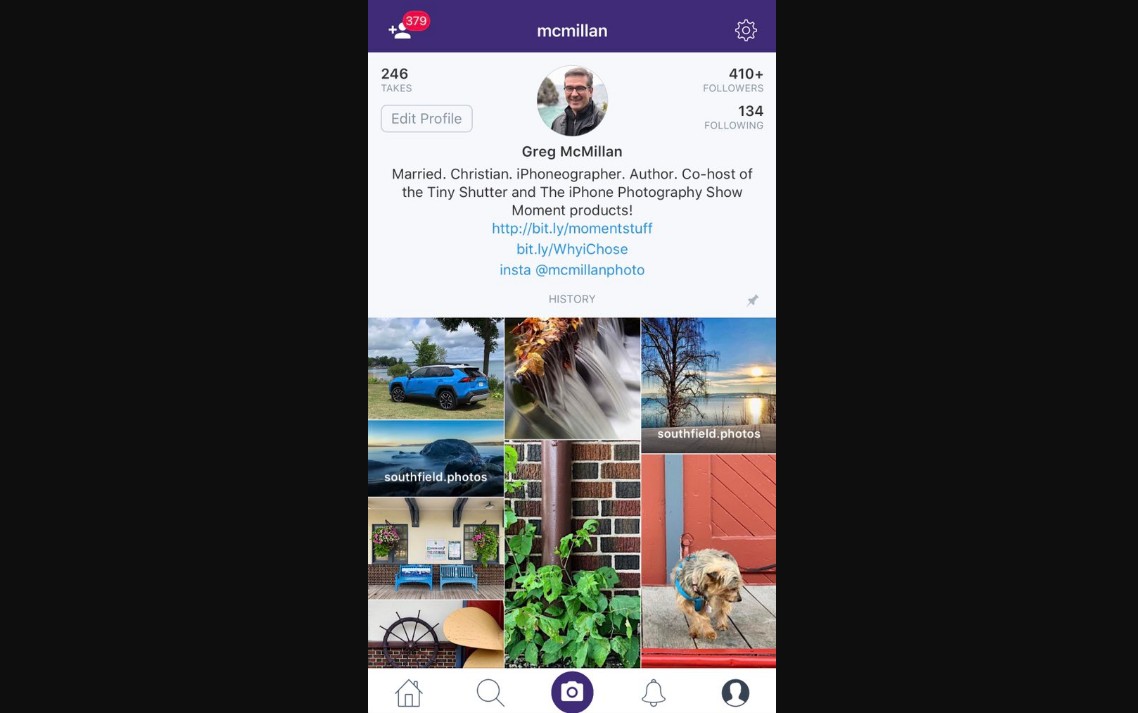
Never heard of Dayflash? You're not alone. Merely correct at present, it's speedily gaining popularity amongst creatives. And that's because the iOS app, launched last year, basically works like Instagram used to. In its ain words, in that location'south "no algorithm and no more missing posts from your friends".
Co-founder Rupali Renjen tells us that, in her view, "Photo sharing platforms unfairly use algorithms to dictate which followers go to see a user'due south posts. And every bit they push button users to spend more time on stories from friends, long-form videos and shopping, all so they can make more money on ads and business organization accounts, less and less fourth dimension is being spent on creators, which is taking away visibility and opportunity".
Yous tin postal service full resolution photos, no algorithms, always genuine engagement, no bots
David Castillo
And creatives do indeed seem to be responding well to the new platform. "I love using Dayflash," says New York photographer David Castilllo. "You tin post full resolution photos, no algorithms, always genuine engagement, no bots. And I dear the aesthetics of the interface."
Scott Terry, a Chicago-based creator and ambassador for brands, agrees. "It's pretty corking because you tin can post full frame and loftier resolution, unlike Instagram," he points out. And at that place'southward video, too.
"For me personally, I love existence able to show my work as I've made it, rather than being compressed like on Twitter or Instagram," says filmmaker Tyler Palmer. "And even with little following, my work still gets seen."
LA-based photographer Torenzo Perry is also a fan. "I personally love the app because it focuses more on the content, and less on the likes and views," he says. While Greg McMillan, an iPhoneographer and co-host of the Tiny Shutter podcast, admires both the app and the philosophy of its makers. "They take information technology figured out as to what a social platform should be and how it should work," he enthuses.
And information technology's non only photographers who are fans. Take Brazilian character creative person Danielle Pioli, who uses it to share her illustrations and comic strips. "I really like Dayflash," she says. "Since I began using information technology, it has improved a lot. Non only the usability of the app only also the quality of the content within it. I see this app as a new trend for visual artists of all kinds. It's easy to use, pretty straightforward, and fun.
06. ArtStation
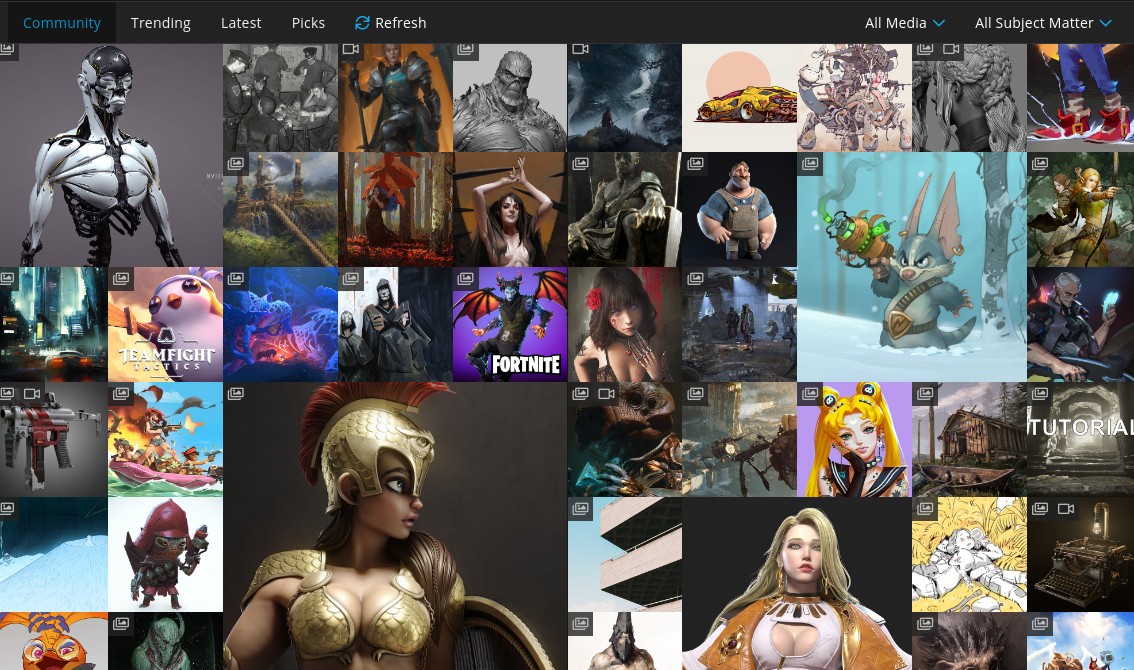
Launched in 2014, ArtStation may not have inverse a great bargain over the years. Only it remains the place to post your profile for professional 2D and 3D artists, especially those working in the games, movie, media and entertainment industries, or those aspiring to practice so.
Every bit we reported in our commodity how to get a job equally a video games creative person, recruiters nowadays don't merely encourage you to mail your work on ArtStation; they wait it. Some artists all the same agree dorsum from doing and so, considering they don't want to appoint in what they see every bit a popularity contest. But by and large, recruiters don't really care how many likes or followers y'all take; it's purely about whether or not they like your fine art, and if it fits what they're looking for.
"Nosotros're interested in artists who produce the sort of piece of work that we tin utilize; that's it," says Kevin McDowell, art director for Artistic Associates's Total State of war series. "And so make sure it's visible to us, and don't worry about the numbers."
07. DeviantArt

Launched in 2000, DeviantArt has more of an amateur, hobbyist feel to it than ArtStation. And so while you're less likely to get commissions directly through it, it'due south a better platform for putting your art in front end of your peers and getting feedback.
People tend to come and go from DeviantArt over time, and author and illustrator Katy L Wood is no exception. "DeviantArt was the first social media site I joined, almost thirteen years agone, when I was a teenager," she recalls. "It was a huge role of my growth as an artist, due to all the astonishing free resources information technology had, from tutorials to brushes to stock. Plus, dorsum then, DeviantArt had a great community. People really talked and interacted and had fun."
Eventually, though, she felt the customs had started to wane and turned her attentions elsewhere. "However, in the concluding year I've been working my way dorsum into using DeviantArt, especially with its delightful rebrand," she says. "I came back primarily because DeviantArt is straightforward. There are no algorithms to game, it'due south well organised, and it'southward supportive of every type of fine art and writing I practice."
08. The Dots

Launched in 2014, The Dots is an online professional network that aims to be "LinkedIn for creatives". And it'due south had a fair amount of success in doing and so, alluring companies such as Google, Burberry, Sony Pictures, Viacom, M&C Saatchi, Warner Music, Tate, Discovery Networks and VICE to utilise it as a recruiting tool.
There are lot of other things you tin can do on the platform besides just waiting to be offered a job, though. These include connecting with other creatives in your field, checking out people'southward side hustles, responding to requests for collaborations, keeping up to the latest events and more.
Information technology's very much a case, then, of what getting out what you put in. And unlike LinkedIn, every page yous interact with is beautifully designed.
Currently, most creatives seem to use The Dots every bit part of a self-promo mix, rather than focusing on it exclusively. Yorkshire-based freelancer Joanna Kosinska, for example, says: "I will mail service my work pretty much anywhere where I can proceeds traction, including The Dots, Behance, Dribbble, and Creativepool.
"Every bit a graphic designer and photographer, I accept to put my name out there. So any platform that makes information technology easier to find my work is my friend, and I'll gladly invest time to create a profile and share projects."
09. Dribbble
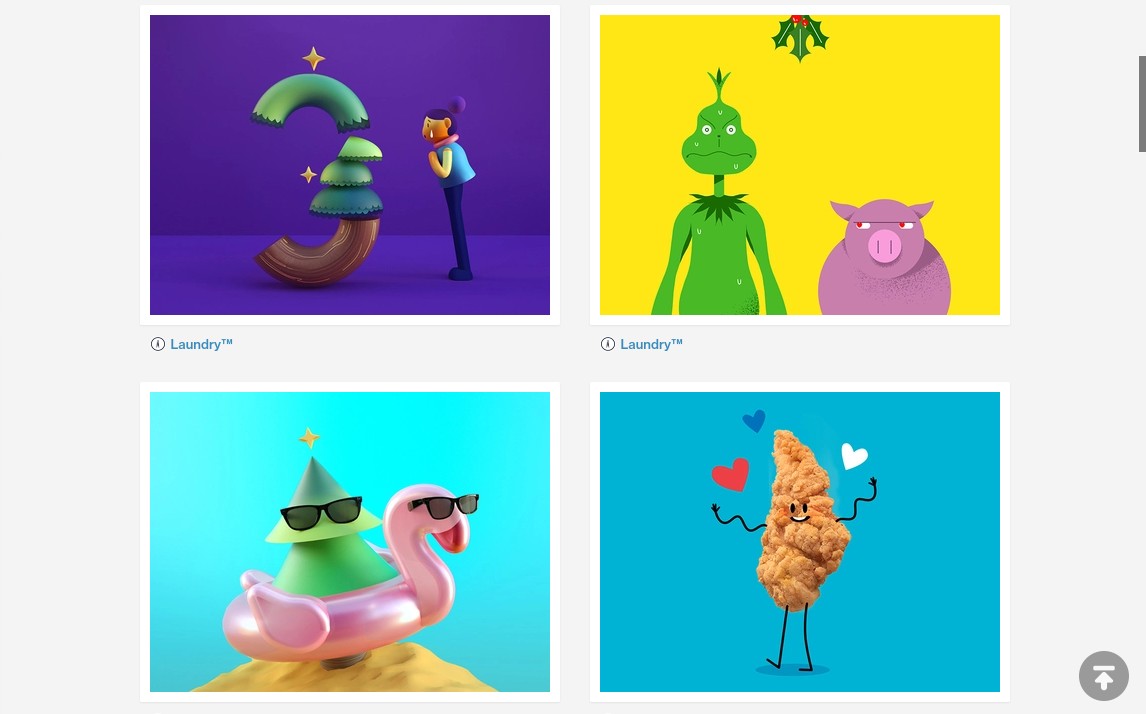
Launched in 2009 by Dan Cederholm and Rich Thornett, Dribbble was never intended to exist a straightforward portfolio site like Behance. Its specific bending was about teasing out small glimpses of what you were working on, when y'all were unable to share the whole project.
Dribbble has since evolved across web and mobile app design to accept in icon blueprint, branding, animations, prototypes, illustrations, graphic art and other disciplines. Only in that location'southward still a focus on informally sharing small-scale screengrabs (known as 'Shots'), rather than setting out large and detailed images in an organised and carefully annotated way. As Albuquerque-based web designer Jack Harner puts information technology: "Dribbble feels more like a community than a portfolio site."
That doesn't mean it'due south just designers talking to designers, though. The platform now actively helps companies such as Apple, Airbnb, Facebook, Google, Dropbox and Slack to rent designers, and many clients utilize it to find people to commission.
"Dribbble has been a nifty platform for the states to generate new business especially within the tech industry," says PJ Richardson, partner at Los Angeles design studio Laundry. "Very graphic and illustrated work seems to play the all-time, but we've also gotten new clients considering of what we post there equally well."
For others like Nicola Jones, aka How-do-you-do I'grand Nik Blueprint, Dribbble is a place for posting work that doesn't fit in your master portfolio. "This is where I put my personal projection illustrations, which is something I'd similar to do more than, so if I e'er become any illustration enquiries I indicate them at that place. Analogy is more of a side matter for me, every bit I do brand and marketing design before all that for clients."
10. Behance

Behance is the closest thing on this listing to a pure portfolio platform, merely with a social aspect plugged in. Founded by Matias Corea and Scott Belsky in Nov 2005, the company was acquired by Adobe in 2012, and its reach has since become enormous.
Unlike, say, Dribbble or Instagram, Behance offers a mode to show more of your work than just a single, centre-grabbing image. As motion designer and 3D generalist Jesus Suarez explains: "Behance is great for sharing the making of and behind the scenes aspects. It allows for more complete look at the project."
Of grade, you could practice all that on your ain website, just the social aspects of Behance means that it'south worth posting stuff there too, if even yous're but duplicating the aforementioned content.
It is an ideal place for us to share the behind-the-scenes and case report aspects of our projects
PJ Richardson
And that'south exactly the arroyo Laundry takes, says Richardson. "Our Behance basically mirrors our company site," he explains, "but because it is so shareable and other creatives get to Behance for creative inspiration, information technology is an ideal place for us to share the behind-the-scenes and case written report aspects of our projects."
London-based illustrator, designer & photographer Tim Easley takes a similar view. "I use Behance for total projects alongside my website, because at that place'southward a decent run a risk of being featured at that place, which brings in a lot of views," he says. While Cliff Nowicki, a web designer based in Michigan, Usa says. "I use Behance because it'southward super easy to merely put something up online."
xi. Instagram

The rise of Dayflash (number one on our listing) is a sign that a few people's love affair with Instagram is waning. Merely overall, Instagram remains far and abroad the nigh popular visuals-based social media platform today, and for most creatives, a presence of some sort on the image sharing platform remains a must.
"While, Behance is great for sharing and getting your work in front of professional eyes, I tend to use Instagram mostly," says George Kofi Prah, designer at New York and LA branding agency loyalkaspar. "It'south the perfect tool for creatives in the fashion that Spotify is for musicians.
"It provides access to a much wider audience than whatever other platform and allows me to appoint with literally anyone. Using hashtags makes being discovered and finding new and interesting things a lot easier."
Ease of use is also an important cistron for many. "I utilize Instagram, followed by The Dots, because these platforms are easier and more than accessible in terms of delivery per post," says Welsh/Sri Lankan artist Murugiah. "Behance has too many fields to fill in per post!"
Nosotros need to promote our work where our audition lives
Amy Kilner
For Amy Kilner, freelance designer and founder of inspiration web log The Pattern Fix, using Instagram is a no-brainer. "Yous have to remember nosotros're designing for our clients' objectives, not other creatives," she points out. "Then we need to promote our work where our audience lives. Don't become me wrong, I love creative sites – I run my ain, after all - but it's not where my clients are!"
Laundry follows the aforementioned logic, says Richardson. "Artists and clients alike all seem to get to Instagram for design and animation inspiration, which is why we use information technology," he reasons. "Nosotros've fifty-fifty landed projects from information technology and clients increasingly inquire to runway our work there. Information technology's besides the easiest to share and always has been. Additionally, it is easy to schedule posts without formatting problems."
Luke Manning, creative managing director of Pencil Studio, is primarily interested in getting piece of work shared amongst the artistic community, and for that it's been Instagram and Twitter that have been the most effective, he says. "Our own posts have been picked up shared by pop design blog sites and nosotros've fifty-fifty had directly contact by brand owners via sharing our latest projects," he explains. "I similar Behance and how information technology works, but for us it is yet to be fruitful across having a place to store projects."
And if you lot're wondering how to be successful on Instagram, we've got a slice on how to alter the font in your Instagram bio plus a guide packed full of pro tips on how to increase Instagram appointment.
12. LinkedIn

Fifty-fifty though it'south had a total rebrand, LinkedIn doesn't immediately catch you as being a useful social platform for creatives. Simply art, design and filmmaking are businesses like any other, and many creative pros say they're making good use of LinkedIn regardless of what information technology looks like.
Take Frank Suyker, aka Mr Carbohydrate, an art managing director based in the Netherlands. "I use LinkedIn to get recurring revenue out of my existing clients," he explains. "Past posting my blog posts on LinkedIn, I'grand kept top of mind. And when they exercise have work that needs to be washed, they come to me."
Laundry has also made a shift to LinkedIn recently, which it has been actively using for the past year. "Facebook used to be a great identify to share work just it became cluttered with ads and not design-focused posts," says Richardson. "in contrast, the very work-focused and curated nature of LinkedIn has made it a forum to share design, animation, and behind-the-scenes content, which has garnered a lot of great attending for us."
Read more:
- Social media tips: unmissable advice for artists
- How to make social media work for you
- Instagram Reels vs TikTok: Which should you be using?
Related articles
Source: https://www.creativebloq.com/features/social-media-for-artists
0 Response to "What Artist Were Famous for Social Media Art Works"
Post a Comment